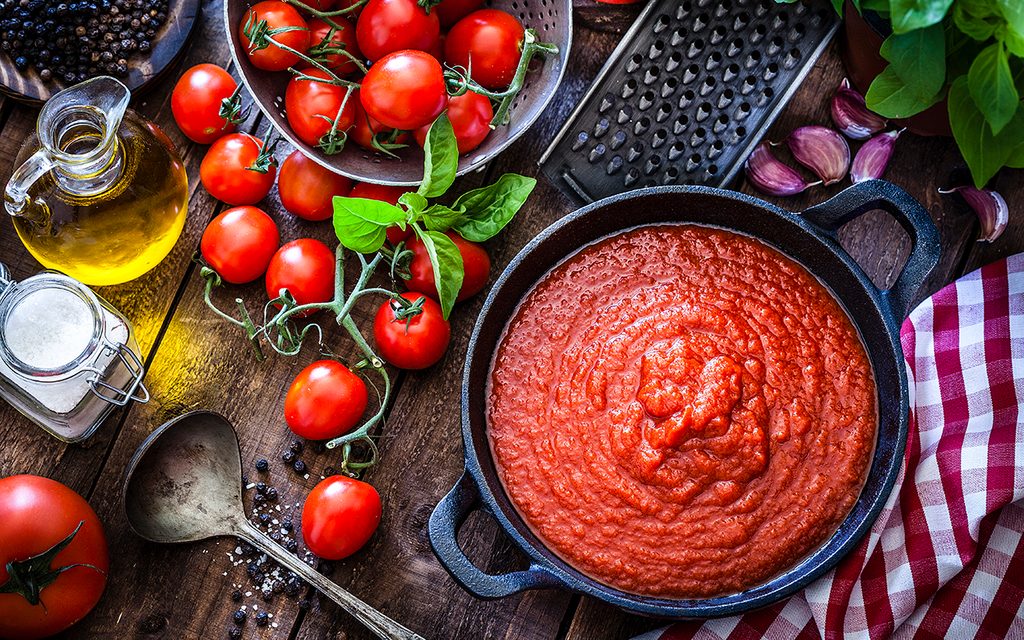Marinara vs. Tomato Sauce: What’s the Difference?
Updated: Nov. 08, 2022

Confused about the difference between marinara and tomato sauce? They're both made with tomatoes, but one is thicker and more complex than the other. Here's how to make and use each one.
Most of us are pretty familiar with Italian tomato sauce. It’s tossed with pasta for any number of quick-and-easy weeknight dinners, simmered with eggs for shashuka or slathered onto homemade pizza dough.
We often see the terms “tomato sauce” and “marinara” used interchangeably on the jars of sauce in the grocery store. You’ll even find some specifically labeled as spaghetti sauce or pizza sauce.
Which begs the question: Other than the fact that they all contain tomatoes, are they actually that different? It turns out, there is not only a difference, but one is also better suited for certain dishes.
Marinara vs. tomato sauce
What is marinara?
If you’re looking for a simple sauce that’s not too thick and tastes like tomatoes, marinara is the way to go. Compared to tomato sauce, marinara is a quick-cooking sauce that only needs to simmer for about an hour. The most classic versions feature San Marzano tomatoes, but any plum tomatoes work well here. It’s seasoned with plenty of garlic, crushed red pepper, and basil, although many versions also include oregano.
Because marinara isn’t too complex in flavor, it’s perfect for pasta and pizza (and these other marinara-based recipes). If you find a jar of spaghetti sauce or pizza sauce at the store, it’s likely a version of marinara. Do you know about the one surprising ingredient you should add to your pasta sauce?
What is tomato sauce?
Unlike marinara, tomato sauce is thick, rich, complex and not traditionally vegetarian. It’s based on the classic French mother sauce, sauce tomat. It starts with salt pork or bacon, onions, carrots and a roux made of flour and butter. Then, you add fresh tomatoes, bay leaves, garlic and veal stock (although many modern-day recipes use chicken stock instead). This sauce isn’t finished quickly, either; it simmers for hours, thickening up as it goes and allowing the flavors to deepen and become almost sweet.
If you’ve ever heard of Sunday gravy or Sunday sauce, that’s a variation of classic tomato sauce. It usually contains additional meat, like pork ribs, ground beef or Italian sausage.
Tomato sauce’s rich flavor and thick texture make it better suited for smothering foods like a gravy. It is served over pasta, but it’s almost never used as pizza sauce. You can also serve it over biscuits for breakfast or use it to smother meat dishes like chicken cacciatore.